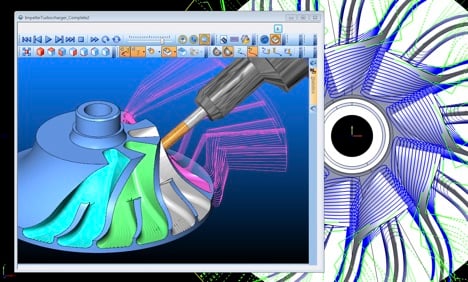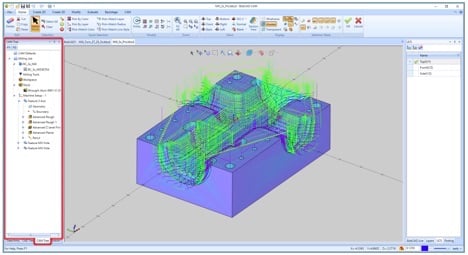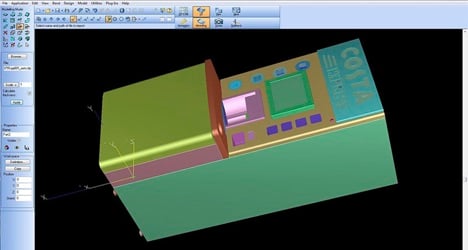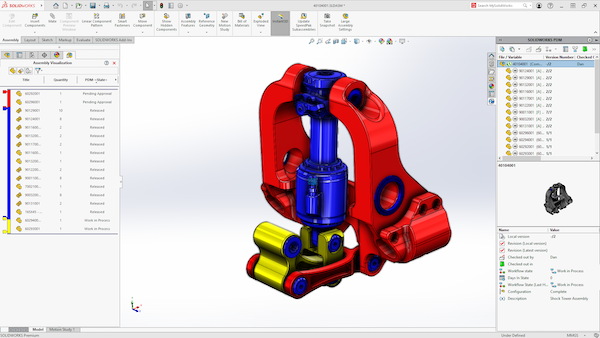Computer-aided design and computer-aided manufacturing (CAD-CAM) software enjoy widespread adoption across various industries that use CNC machines. Using CAD-CAM solutions offer significant advantages such as quicker time to market, greater productivity, workflow optimization, and infinite repeatability. Over the years as a CNC operator at CNC Masters, I have seen the industry start to integrate CAD-CAM software into its workflow. If you are in manufacturing and have not adopted this technology, it’s time to find out why you should. In this article, we’ll discuss the advantages of adding CAD-CAM to your CNC manufacturing process.
1. A Greater Ease of Manufacturing
Adding CAD-CAM software to your CNC toolkit simplifies and streamlines the manufacturing process by reducing the amount of time required for planning and allocating production tasks. The seamless integration of the CAD-CAM ecosystem also makes it simpler to design and manufacture tools and fixtures. CAD files already contain all the design specifications, the nature of tools required, the defined tool path, and the logical workflow, streamlining the CAM process.

The top reason to use CAD-CAM software in CNC production is streamline your manufacturing process. Image source: Bobcad.com.
2. Eliminate Guesswork
One of the greatest advantages of CAD-CAM in CNC manufacturing is program efficiency coupled with automation. These strengths open up a world of possibilities, such as easily designing complex 3- or 5-axis machining jobs. Operators no longer make calculations by hand or try to guess the best way to achieve the desired result.
3. Higher Efficiency
The CAD-CAM combination allows CNC machines to operate autonomously, which improves efficiency and enhances manufacturing capacity. Furthermore, program-led designs allow manufacturing companies to be adventurous and attempt more complex designs without too much effort.
4. Quick Project Turnaround Time
Not only does CAD-CAM reduce time to market — something that every production house/designer aspires to gain — it also helps you connect with your clients more quickly and easily conduct tests, run prototypes, and begin machining from the get-go.
5. Granular Control Over Projects
You can use software tools such as Bobcad’s CAM Tree Manager to monitor and make changes your CAD-CAM CNC machining jobs. This high level of visibility enhances efficiency and comes with other benefits such as the ability to store and reuse templates, copy-paste operations, and reorder sequences. Such granular control over the project reduces errors, which minimizes revisions and increases your production capacity.

CAD-CAM software makes it easy to keep tight control over your design details, adding efficiency and reduced errors. Image source: Bobcad.com.
6. Greater Accuracy and Repeatability
CAD-CAM integration enhances production accuracy through greater project control and allows for improved repeatability. Because manufacturing primarily depends on the CAD-CAM program for detailed information, a CAD-CAM application offers unmatchable repeatability with nearly 0.001 mm accuracy achieved through various gauges and dials — a fact discovered by the CNC Master's in-house tests.
7. Increased Productivity
Through optimized and high-speed tool paths, CAD-CAM software can cut down on cycle times while also reducing the wear and tear on the machine as well as the tools. As a result, it promises long-term durability and reliability through each iteration.
At the same time, the high-speed tool paths improve cutting and machining quality as it does not involve any stop and go motion commonly present in traditional, offset tool paths. In fact, CNC Master has discovered through in-house testing that CAD-CAM-driven high-speed machining can boost CNC machine productivity by almost 50%!
8. Reduce Waste & Avoid Costly Mistakes
A CNC machine by itself finds out the optimum and most efficient manner of machining. However, with CAD-CAM integration and management, you can leverage robust simulation features that allow you to visualize and inspect the machining process and stop errors before they become a problem. It allows you to access detailed data regarding the tool path, cycle times, simulation presentation creation, and part deviation analysis, amongst other things.
CAD-CAM software that offers high levels of simulation can also allow the operator to tap into visualizing the machine tool. Such a multi-pronged approach minimizes waste and mistakes.

With CAD-CAM software you can simulate your design, helping you visualize and test your product as you design. Image source: Hexagon.
9. Less CNC Machine Training, Higher Productivity
With the right specifications, CAD-CAM integration aids the machines in operating autonomously without constant supervision or monitoring. As a result, manufacturers do not require operators to man the machine at all times. Plus, the CAD-CAM programs will maintain quality as they possess a greater ability to produce complex parts.
Final Thoughts
To summarize, CAD-CAM integration with CNC machining comes with several advantages. To be sure, you should be mindful of the cost incurred when implementing new technology, any processing limitations, software complexities, and the usual glitches as you implement new technology, as they can hamper the effectiveness of CAD-CAM applications.
That being said, CAD-CAM applications significantly enhance your design and manufacturing capabilities in more ways than one. Most importantly, it can boost your manufacturing capabilities while addressing the issue of design complexities, which will benefit your organization significantly.
In future installments, I’ll discuss CAD-CAM software packages, tips of how to move your design from CAD drawing to CNC fabrication, and more.
***
Viewpoint articles are tech-focused editorial written by experts from the CAD industry. This article was written by Peter Jacobs from CNC Masters.

Peter Jacobs
Peter Jacobs is the Senior Director of Marketing at CNC Masters. He is actively involved in manufacturing processes and regularly contributes his insights for various blogs in CNC machining, 3D printing, rapid tooling, injection molding, metal casting, and manufacturing in general.
View All Articles




Share This Post